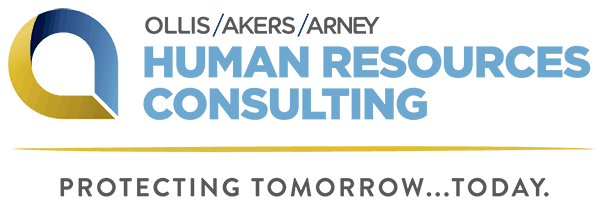Even as stay-at-home orders and restrictions are lifted, daily operations won’t be business-as-usual for many across the country. The coronavirus (COVID-19) pandemic is still going on, despite businesses reopening. Moreover, public health officials and experts are warning of a potential second wave of COVID-19 cases.
Of course, no one knows if or when a second wave of infection will strike—or whether it will be as bad as or worse than the first wave. As such, businesses across the country should start planning today so they’re properly prepared for a second wave of COVID-19 cases.
Review Federal, State and Local Guidance
Similar to the first wave of COVID-19 cases, governmental guidance will play a large role in how your organization should respond to a second wave of COVID-19 cases.
The COVID-19 pandemic has impacted states and regions in different ways. A second wave of cases may follow the same suit, affecting different regions at different times and in varying capacities.
This means that businesses in one region may be able to remain open, while businesses in other regions may need to close or adjust for a second time. As such, it’s critical to understand and continually review all relevant state and local orders to determine if your business needs to take action in the face of a second wave of COVID-19 cases.
Review Your Organizational Risks
Even if there aren’t federal, state or local recommendations to close your business or make changes to prevent the second spread of COVID-19 cases, that doesn’t mean your organization is safe from the coronavirus. What’s more, some businesses may have greater exposures than others, underscoring the importance of performing a thorough risk assessment to determine how you should respond.
Similar to conducting a risk assessment for planning to reopen following the first wave of COVID-19 cases, your organization should conduct a risk assessment in preparation for a reemergence of COVID-19 cases. While the complexity of risk assessments will differ from business to business, they typically involve the following steps:
- Identifying the hazards—When it comes to planning for a second wave of the coronavirus, businesses need to think critically about their exposures, particularly if an infected person entered their facilities. When identifying hazards, it’s a good idea to perform a walkthrough of the premises and consider high-risk areas. It’s also important to consider what tasks employees are performing and whether or not they are especially exposed to COVID-19 risks when performing their duties.
- Deciding who may be harmed by a second wave of cases and how—Once you’ve identified hazards to your business, you need to determine what populations of your workforce are exposed to COVID-19 risks. When performing this evaluation, you will need to make note of high-risk individuals (e.g., staff members who meet with customers or individuals with preexisting medical conditions).
- Assessing risks—Once you have identified the risks facing your business, you must analyze them to determine their potential consequences. For each risk facing your business, you’ll want to determine:
- How likely is this particular risk to occur?
- What are the ramifications should this risk occur?
When analyzing your risks, consider potential financial losses, compliance requirements, employee safety, business disruptions, reputational harm and other consequences.
- Controlling risks—With a sense of what the threats to your business are, you can then consider ways to address them. There are a variety of methods businesses can use to manage their risks, including:
- Risk avoidance—Risk avoidance is when a business eliminates certain hazards, activities and exposures from their operations altogether.
- Risk control—Risk control involves preventive action.
- Risk transfer—Risk transfer is when a business transfers their exposures to a third party.
For preparing for a second wave of the coronavirus, control measures could include cleaning protocols, work-from-home orders and mandated personal protective equipment (PPE) usage.
- Monitoring the results—Risk management is an evolving, continuous process. Once you’ve implemented a risk management solution, you’ll want to monitor its effectiveness and reassess.
Remember, the COVID-19 pandemic so far has been rapidly evolving, and guidance can change quickly. Your business should be prepared to take action at short notice.
Maintain Workplace Safety
Maintaining workplace safety is crucial to preventing the spread of COVID-19 at your organization, and will continue to be crucial in protecting your organization against a second wave of COVID-19 cases. There are a number of OSHA and Centers for Disease Control and Prevention (CDC) workplace controls to consider if your risk assessment determines that COVID-19 poses a threat to your employees or customers. For instance, you should:
- Implement administrative controls—Typically, administrative controls are changes in work policies or procedures that reduce or minimize an individual’s exposure to a hazard. An example of an administrative control for the coronavirus is establishing alternating days or extra shifts that reduce the total number of employees in a facility at a given time.
- Utilize PPE—Businesses should focus on training workers on proper PPE best practices. Employees should understand how to properly put on, take off and care for PPE. Training material should be easy to understand and must be available in the appropriate language for all workers.
- Consider engineering controls—Engineering controls protect workers by removing hazardous conditions or by placing a barrier between the worker and the hazard. For COVID-19, engineering controls can include:
- Installing high-efficiency air filters
- Increasing ventilation rates in the work environment
- Installing physical barriers, such as clear plastic sneeze guards
- Screen employees before they enter the building— To keep employees safe, consider conducting screening procedures to identify potentially ill employees before they enter the workplace. The Equal Employment Opportunity Commission permits employers to measure employees’ body temperatures before allowing them to enter the worksite. Any employee screening should be implemented on a nondiscriminatory basis, and all information gleaned should be treated as confidential medical information under the Americans with Disabilities
Act—specifically, the identity of workers exhibiting a fever or other COVID-19 symptoms should only be shared with members of company management with a true need to know. Be sure to notify employees of this practice prior to implementation in order to avoid catching them off guard. - Be adaptable—You should be prepared to change your business practices if needed to maintain critical operations. This could involve identifying alternative suppliers, prioritizing existing customers or suspending portions of your operations.
- Create a dialogue with vendors and partners—Talk with business partners about your response plans. Share best practices with other businesses in your communities, and especially those in your supply chain.
- Encourage social distancing—Social distancing is the practice of deliberately increasing the physical space between people to avoid spreading illness. In terms of COVID-19, social distancing best practices for businesses can include:
- Instructing workers to maintain at least 6 feet of distance from other people
- Hosting meetings virtually when possible
- Limiting the number of people on the job site to essential personnel only
- Discouraging people from shaking hands
- Encourage employees to stay home if possible—Statistically speaking, the best way to prevent the spread of COVID-19 is to minimize person-to-person contact. As such, employers are using the following strategies to encourage employees to stay home:
- Expanding telecommuting policies to ensure as many employees as possible can work from home
- Highlighting benefits offerings that employees might not know about, including short-term disability
- Expanding leave policies
- Offering financial incentives for employees to stay home and not come into the office
- Manage the different risk levels of their employees—It’s important to be aware that some employees may be at higher risk for serious illness, such as older adults and those with chronic medical conditions.
- Separate sick employees—Employees who appear to have symptoms (e.g., fever, cough or shortness of breath) upon arrival at work or who become sick during the day should immediately be separated from other employees, customers and visitors, and sent home. If an employee is confirmed to have COVID-19, employers should inform fellow employees of their possible exposure to COVID-19. The employer should instruct fellow employees how to proceed based on the CDC Public Health Recommendations for Community-Related Exposure, and applicable local guidance.
- Support respiratory etiquette and hand hygiene—Businesses should encourage good hygiene to prevent the spread of the coronavirus. This can involve:
- Providing tissues and no-touch disposal receptacles
- Providing soap and water in the workplace
- Placing hand sanitizers in multiple locations to encourage hand hygiene
- Perform routine environmental cleaning and disinfection—Businesses should regularly sanitize their facility to prevent the spread of COVID-19. Some best practices include:
- Cleaning and disinfecting all frequently touched surfaces in the workplace, such as workstations, keyboards, telephones, handrails and doorknobs.
- Discouraging workers from using other workers’ phones, desks, offices, or other tools and equipment, when possible. If necessary, clean and disinfect them before and after use.
- Providing disposable wipes so that commonly used surfaces can be wiped down by employees before each use.
Be sure to consider the needs of your business and implement strategies that are specific to controlling and promoting workplace safety at your organization.
Communicate With Employees
The past few months have caused immense change for your business and your employees. A poll from Ginger, a mental health provider, revealed that 88% of U.S. workers have been moderately to extremely stressed during the past 4-6 weeks, with more than two-thirds reporting these times are the most stressful in their career.
It’s not possible for you to control the pandemic, but it is possible for you to help ease the stress your employees are experiencing. In these uncertain times, it’s imperative that you clearly communicate your business’s plans as frequently as possible. Here are some tips for effective employee communications:
- Be open with employees about management decisions and ask for suggestions to rectify problems.
- Provide as much information as possible about the pandemic.
- Communicate the future of the business with employees often—in meetings, on the company intranet site, in newsletters and in blogs.
- Be empathetic in your communications, as every employee’s situation may be different.
Additionally, try to give as much notice as possible if your organization plans to make significant workplace changes, including shutting down operations or requiring employees to work from home.
Prepare Now to Stay Safe Later
Due to the nature of the COVID-19 pandemic, rules and regulations are constantly changing. You should be prepared to change your business practices if needed to maintain critical operations. For more information on how to keep your business, employees and customers safe whether a second wave of COVID-19 cases occurs or not, contact Ollis/Akers/Arney Insurance & Business Advisors.
This HR Insights is not intended to be exhaustive nor should any discussion or opinions be construed as professional advice. © 2020 Zywave, Inc. All rights reserved.






